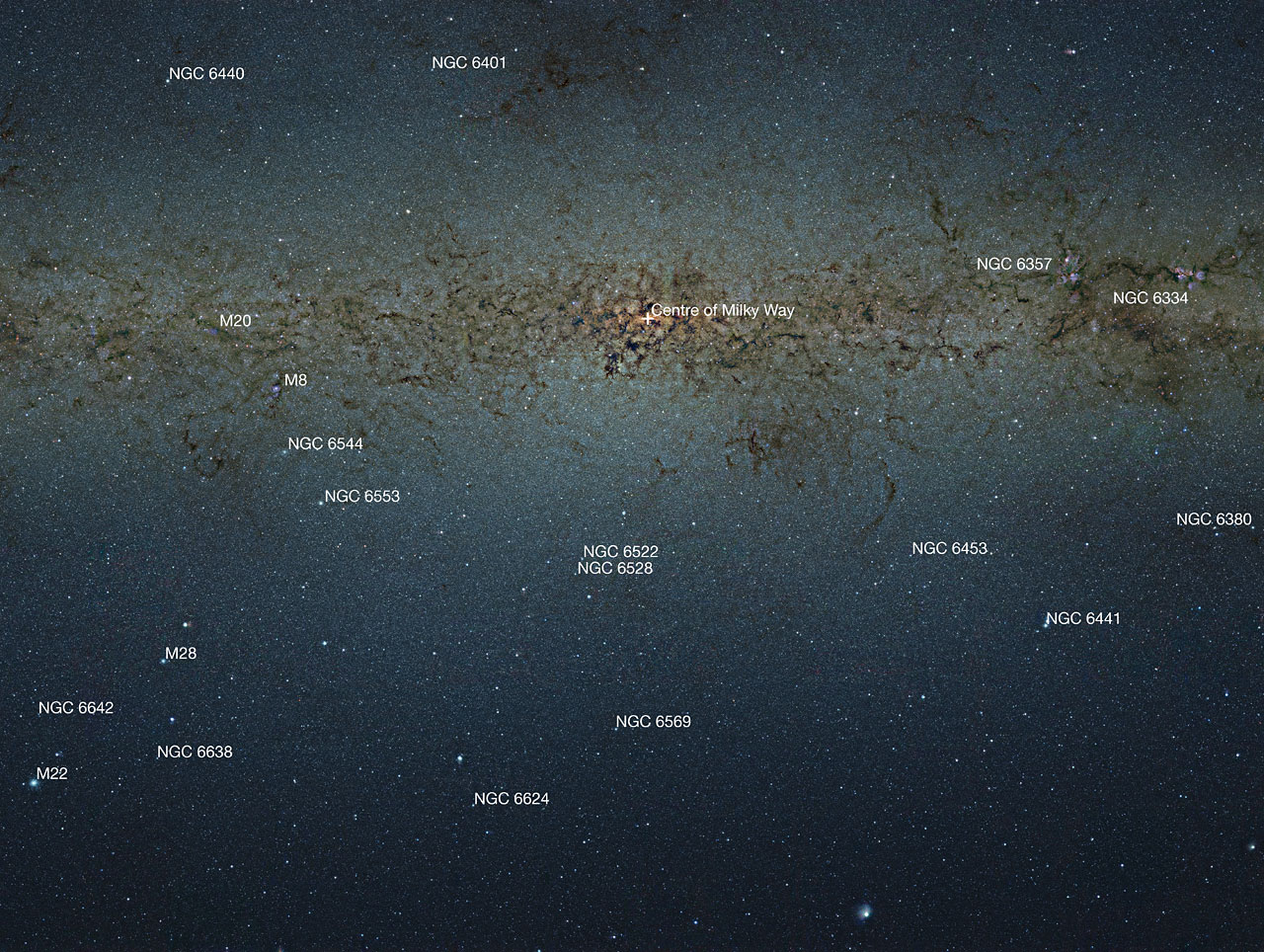The Milky Way Bulge
The central part of the Milky Way, its Bulge, is the least well known part of our galaxy due to extreme stellar density and patchy extinction. The stars in the bulge are distributed along the bar. The properties of the stars in the Milky Way bulge trace its origin and evolution. The projects led by Manuela Zoccali including the GIBS survey based on the FLAMES Large Programme "Mixed components in the Milky Way Bulge?", and VISTA Variables in Via Lactea (VVV), a VISTA public survey led by Dante Minniti and Phil Lucas, aim to disentangle the structure and origin of the Milky Way Bulge. I am actively involved in these projects.

The VVV survey project was approved at the end of 2006 and it started taking data in early 2010, after the VISTA telescope was delivered to ESO. In the first two seasons (2010-2011) VVV has mapped ~300 sq.deg area in the Milky Way bulge and ~220 sq.deg in the adjacent disk in ZYJHKs broad-band filters, making the deepest and highest resolution map of the central parts of the Galaxy. Now VVV continues with the multi-epoch monitoring of its 196 tiles in the bulge and 152 in the disk that will last until the end 2015. The survey goals are summarized in the paper by Minniti et al. (2010) and the first data release is described in the DR1 paper (Saito et al. 2012).
VVV has already been used in several PhD and master thesis projects, and one of the first was the PhD project of Oscar A. Gonzalez, who worked at ESO under my supervision within the IMPRS PhD programme between 2009-2012. Using the VVV data Oscar investigated extinction and metallicity distribution across the bulge. The high resolution extinction map and the first complete photometric metallicity map of the bulge are available through the BEAM calculator on the web. Furthermore Oscar measured alpha-element abundances in 650 K-type giant stars in 4 bulge fields, confirming, with large number statistics, the chemical similarity between the Galactic bulge and thick disk, which are both alpha-enhanced when compared to the thin disk stars. This study showed that the metal-poor stars show homogeneous alpha-abundance patterns across the bulge, while the metal-rich stars disappear at higher Galactic latitudes.